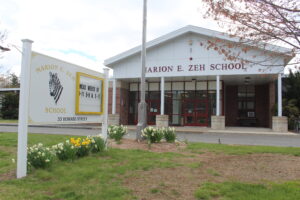
NORTHBOROUGH – A recent survey showed that 80% of Northborough families, faculty, staff, and community members preferred keeping the town’s neighborhood school model over an alternative to divide schools by grade level.
This was a baseline survey conducted by the Grade Level Configuration Study Group, which is examining how Northborough should configure its elementary schools in the future.
The group’s study, which was presented to the School Committee on June 1, examined the current neighborhood school model and a partner school model, which would use the existing elementary schools, creating schools for preschool through second grade students and third grade through fifth grade students.
Under the existing neighborhood model, Northborough students are assigned to an elementary school based on their geographic location in town.
Reconfiguration talks date back years
Speaking earlier this month, Northborough/Southborough Schools Superintendent Greg Martineau cautioned that considering changing a configuration isn’t a small feat.
It takes time, he said.
“I think one of the important aspects of this presentation this evening is that this isn’t, ‘Which model is better?’ It’s ‘Which model is best for our community?’ Because, each model has merit and advantages,” Martineau said.
As he explained it, for the past several years, there have been conversations regarding grade configuration in Northborough’s elementary schools.
The Public Schools of Northborough and Southborough reauthorized its strategic plan in spring 2020. In the development of the plan, Martineau said the district decided to take a deeper look as to whether the current elementary school configuration is the best option to maximize resources and prepare students.
The School Committee voiced its support for the Grade Level Configuration Study Group back in November.
Schools in need of various repairs, renovations
Assistant Superintendent of Teaching and Learning Stefanie Reinhorn on June 1 walked through the advantages of both elementary school models.
There are four elementary schools that serve kindergarten through fifth grade — Zeh, Proctor, Lincoln Street and Peaslee.
The oldest and largest school is Zeh, which was constructed in 1950. The school was expanded and renovated in 1998.
The newest school — Lincoln Street — was originally opened in 1965 and completed renovations in 2015.
“They’re all a little different in their own way,” Assistant Superintendent of Operations Keith Lavoie said. “They all have very unique characteristics.”
As the district weighs any possible reconfiguration, Lavoie noted that there are “many” capital projects that also need to be considered.
The Peaslee School is at the top of that list, Lavoie said. It was built in 1962 and hasn’t had any formal renovations since, according to Lavoie.
The study further noted that most of Peaslee’s building systems and components were nearing their end of life expectancy. The HVAC and electrical systems were of particular concern.
Another priority for the capital plan in the upcoming fiscal year is a flat portion of the Proctor School roof. The school was built in 1956. The pitched portion of the roof was then replaced in 2015.
Lavoie said the study should not just focus on the schools’ facilities.
“We also want to make sure that we’re doing the proper long-term planning as part of the review,” Lavoie said.
Administrators talk next steps
Lavoie noted that there are some unanswered questions remaining from the Configuration Study Group’s report.
These include questions about the impact of reconfiguration on transportation, the timeline for a potential Peaslee building project and which model maximizes the physical resources of the schools.
Martineau said the district needs to do more community outreach about the models, including holding community forums and listening sessions before eventually surveying stakeholders again on their preferred model.
The district may present a formal recommendation to the School Committee in February or March of next year. If a change is made, though, Martineau said it wouldn’t happen in the next school year or the year after that.
“Most likely, the students that would be impacted by a reconfiguration aren’t necessarily our students [yet],” he said.
School Committee member Joan Frank asked how the district could reach families with younger children.
“Some people buy into a district from what they’ve heard because they want to go to certain school,” Frank said.
She said she taught at a non-neighborhood school where kids transitioned every two to three years.
“Parents were always concerned about the transitions because, as soon as the kids got used to the school, next year they’re out and they’re onto another one,” Frank said.
While she said the benefits of partner schools for educators were “phenomenal,” Frank added that it’s a hard decision, noting that schools consider themselves families.
The School Committee voiced its support for the study group to continue its work to later return to the committee in the future with additional information.
RELATED CONTENT
Few oppose reshuffling grades in Marlborough
Shrewsbury moves forward with police station and municipal campus feasibility study

















